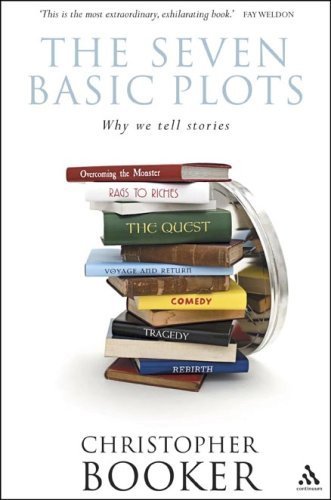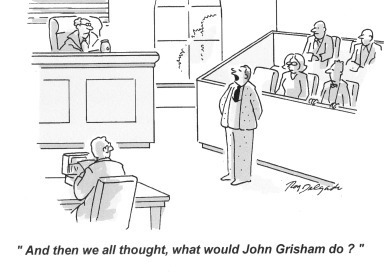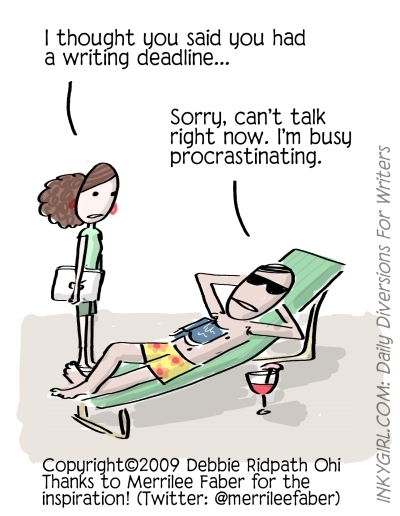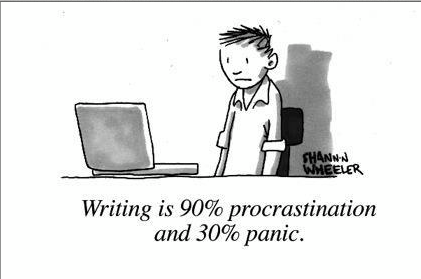Tyson Adams's Blog, page 84
May 20, 2013
Call back with a verb
May 17, 2013
The 10 Commandments of How to Write a Thriller
I love a good thriller. To me novels are meant to, first and foremost, entertain. Some flowery prose may be interesting, the relationships and settings may be fascinating, but if there isn’t any imminent danger to life, limb and puppies, then I’m likely to be throwing the book away.
Mystery, crime and thriller genres are often lumped together or confused for one another. This is kinda like cars, some people don’t know the difference between cars and will just go by colour. While it’s true that they often overlap, there’s a distinct difference: in a mystery there is a puzzle to solve, in a crime there is a crime to solve after it has occurred (although there may be others committed later in the story), whilst a thriller is all about knowing that a crime is going to be committed and the story details the prevention of it.
In an article on Writer’s Digest, Zachary Petit put forward a list by Brian Garfield. He called this the 10 Commandments of thriller writing, because you can’t have a thriller if someone isn’t breaking some rules.
The 10 Commandments of How to Write a Thriller
Start with action; explain it later. TA: I especially agree with this point. I’m sick of “thrillers” that take the first half of the book to set up the action.
Make it tough for your protagonist.
Plant it early; pay it off later.
Give the protagonist the initiative.
Give the protagonist a personal stake.
Give the protagonist a tight time limit, and then shorten it.
Choose your character according to your own capacities, as well as his/hers.
Know your destination before you set out.
Don’t rush in where angels fear to tread.
Don’t write anything you wouldn’t want to read. TA: You know, like street directions and descriptions of flowers and home renovations.
For the full piece, “10 Rules for Suspense Fiction” by Brian Garfield, click here.
At the 2008 Maui Writers Conference, bestselling thriller writer Gary Braver (Skin Deep) said that dread drives thrillers. You know who the good guys and bad guys are. Dull moments will lose an audience, and writers can’t afford to lose an audience, even for one page. To captivate an audience (and agents and publishers), Braver offers these 10 essential ingredients for a successful thriller.
1. You need to have a good story. Thrillers want to be thrilled. A common element in thrillers is that the protagonist will fall victim to someone else’s scheme and get stuck in a moment of dread. There are only three themes in all of literature: death and rebirth (Stephen King’s Misery); the hero slaying a dragon to restore the world to normalcy (James Bond, Indiana Jones); and the quest to make life better (The Da Vinci Code). Know which theme fits your story.
2. Write about the underdog. Tell your thriller from the point of view of the person with the most to lose. The protagonist gives the story character. Give him baggage and emotional complexity.
3. Multiple points of view can give you great range in a thriller. They allow you inside the heads of many characters, which can build more dramatic tension and irony.
4. Open your book with an action scene. Don’t put biographical information or exposition in Chapter 1 (do that later). Introduce the crime—which tells you the stakes—and introduce the hero and villain, and even some obstacles the protagonist may face.
Don’t sacrifice style—use metaphors and good language—but stick with action.
5. Early on, make clear what your protagonist wants and what he fears. You should know what the protagonist wants and how he would end the novel if he were writing it.
There are two quests: Stopping the bad stuff from happening (In The Silence of the Lambs, it’s to stop Buffalo Bill from killing) and dealing with the character’s baggage (for Clarice to be a good, professional FBI agent in a [then] male-dominated profession).
Think Cinderella: Her main quest is to get to the ball. It’s about liberation. When she gets to the ball she finds freedom.
6. Make your characters miserable. Ask what the worst thing is that could happen to your protagonist and make it worse. Give them grief, false hope, heartaches, anxiety and near-death experiences. We don’t want our protagonist to win until the end.
7. Your main characters have to change. It has to be an emotional change that shows growth and victory over some of his baggage. In The Silence of the Lambs, Clarice is stronger and tougher at the end and she gets a good night’s sleep.
8. Pacing must be high: Strong Narrative Thrust. Each scene should reveal something new, no matter how slight it is. Don’t tell us about stuff that has nothing to do with the story. The villain has a ticking clock, so there’s no time to waste on pages with useless information. Short paragraphs and white space are good. Consider using cliffhangers at the end of every chapter, albeit a sudden surprise or provocative announcement.
9. Show—don’t tell. Avoid the passive voice. Use action verbs (He heard the screams in his bedroom). Avoid adverbs—they are cheesy and cheap ways of telling instead of showing. Don’t start sentences with –ing words (“He stared” vs. “Staring at the …”). Make the subject and verb close and up front in the sentence.
10. Teach us something. Make sure your audience has learned about something—an animal, medical treatment, social issue—so we walk away with more knowledge.
Tagged: Brian Garfield, Craft & Technique, Crime, Danger, Gary Braver, General, Getting Published, John Grisham, Right What You No, There Are No Rules Blog by the Editors of Writer's Digest, Thrillers, Tyson Adams, WD Magazine, Writer's Digest, Writing, Zachary Petit

May 14, 2013
Performance enhancers for writers
Tagged: Cartoon, Drugs, Drugs in sport, Drugs in writing, Funny, Humor, Humour, Performance enhancers, Right What You No, Tyson Adams, Writer, Writers, Writing

May 13, 2013
History Repeating – The 7 Plots

A friend made the comment to me recently that a film we had both watched was merely a rip-off of another film. Rip-off is a bit harsh in my opinion. If we think hard about all the books and films we’ve ever watched and then break them down into their general plots you start to see a lot of patterns. Boy meets girl. Girl meets boy. Buddies team up to do something awesome. Odd couple team up to do something awesome. When all said and done, it is hard to identify anything truly original.
As a result, people often say that there are only a certain number of basic plots and that any story is really just a variation on these plots. Depending on how detailed they want to make a “basic” plot, different writers have offered a variety of solutions. An article I found lists these:
1 Plot:Attempts to find the number of basic plots in literature cannot be resolved any more tightly than to describe a single basic plot. Foster-Harris claims that all plots stem from conflict. He describes this in terms of what the main character feels: “I have an inner conflict of emotions, feelings…. What, in any case, can I do to resolve the inner problems?” (p. 30-31) This is in accord with the canonical view that the basic elements of plot revolve around a problem dealt with in sequence: “Exposition – Rising Action – Climax – Falling Action – Denouement”. (Such description of plot can be found in many places, including: Holman, C. Hugh and William Harmon. A Handbook to Literature. 6th ed. New York: Macmillan Publishing Co, 1992.) Foster-Harris’ main argument is for 3 Plots (which are contained within this one), described below.
3 Plots:Foster-Harris. The Basic Patterns of Plot. Norman: University of Oklahoma Press, 1959. Foster-Harris contends that there are three basic patterns of plot (p. 66):
“’Type A, happy ending’”; Foster-Harris argues that the “Type A” pattern results when the central character (which he calls the “I-nitial” character) makes a sacrifice (a decision that seems logically “wrong”) for the sake of another.
“’Type B, unhappy ending’”; this pattern follows when the “I-nitial” character does what seems logically “right” and thus fails to make the needed sacrifice.
“’Type C,’ the literary plot, in which, no matter whether we start from the happy or the unhappy fork, proceeding backwards we arrive inevitably at the question, where we stop to wail.” This pattern requires more explanation (Foster-Harris devotes a chapter to the literary plot.) In short, the “literary plot” is one that does not hinge upon decision, but fate; in it, the critical event takes place at the beginning of the story rather than the end. What follows from that event is inevitable, often tragedy. (This in fact coincides with the classical Greek notion of tragedy, which is that such events are fated and inexorable.)
7 Plots7 basic plots as remembered from second grade by IPL volunteer librarian Jessamyn West:
[wo]man vs. nature
[wo]man vs. [wo]man
[wo]man vs. the environment
[wo]man vs. machines/technology
[wo]man vs. the supernatural
[wo]man vs. self
[wo]man vs. god/religion
20 Plots:Tobias, Ronald B. 20 Master Plots. Cincinnati: Writer’s Digest Books, 1993. (ISBN 0-89879-595-8)
This book proposes twenty basic plots:
Quest
Adventure
Pursuit
Rescue
Escape
Revenge
The Riddle
Rivalry
Underdog
Temptation
Metamorphosis
Transformation
Maturation
Love
Forbidden Love
Sacrifice
Discovery
Wretched Excess
Ascension
Descension.
36 PlotsPolti, Georges. The Thirty-Six Dramatic Situations. trans. Lucille Ray.
Polti claims to be trying to reconstruct the 36 plots that Goethe alleges someone named [Carlo] Gozzi came up with. (In the following list, the words in parentheses are our annotations to try to explain some of the less helpful titles.):
Supplication (in which the Supplicant must beg something from Power in authority)
Deliverance
Crime Pursued by Vengeance
Vengeance taken for kindred upon kindred
Pursuit
Disaster
Falling Prey to Cruelty of Misfortune
Revolt
Daring Enterprise
Abduction
The Enigma (temptation or a riddle)
Obtaining
Enmity of Kinsmen
Rivalry of Kinsmen
Murderous Adultery
Madness
Fatal Imprudence
Involuntary Crimes of Love (example: discovery that one has married one’s mother, sister, etc.)
Slaying of a Kinsman Unrecognized
Self-Sacrificing for an Ideal
Self-Sacrifice for Kindred
All Sacrificed for Passion
Necessity of Sacrificing Loved Ones
Rivalry of Superior and Inferior
Adultery
Crimes of Love
Discovery of the Dishonor of a Loved One
Obstacles to Love
An Enemy Loved
Ambition
Conflict with a God
Mistaken Jealousy
Erroneous Judgement
Remorse
Recovery of a Lost One
Loss of Loved Ones.
It is therefore inevitable that it is all just a little bit of history repeating.
More examples: The Seven Basic Plots summary and Google answers.
Tagged: 7 plots, Charles Booker, History Repeating, Literature, Plot, Propellorheads, Right What You No, Shirley Bassey, Tyson Adams, Writing

May 9, 2013
Answering the phone and door
Have you found Jesus?
First of all, I didn’t know he was missing. So I did a bit of checking, turns out Jesus is the reining world hide and seek champion, 33AD to present. Given how many people are now out door-knocking, trying to find him, it must be only a matter of days before Jesus will be found and people will stop knocking on our doors.
Are you happy with your telecommunications provider?
It seems odd that none of the telecommunications providers offer a service that stops you being bothered by marketers trying to get you to switch providers.
Would you like to donate to a good cause?
I love donating to good causes. Sadly I’m often lacking in cash on hand and none of the donation collectors seem willing to accept sperm bank cheques.
Our ball went into your backyard….
As long as there has been neighbours there have been kids deciding their backyard is too small for the games they play. Thankfully children are very useful for household chores like hand weeding my backyard in order to find the lost ball that may, or may not, have found its way inside with the dog.
We’re from the Church of Latter Day Saints, could we come in to speak to you?
Religious people are interesting, going out and visiting everyone and wanting to have a chat about their religion. How do they coordinate their visits so that all the religious people aren’t all out door-knocking so no-one is home to talk about religion with them? I wonder how many Mormons (or others) have been invited in so they can help with the filming of the low budget home movies that are popular on the internet.
I’m campaigning for the local member of parliament.
You really have to wonder how these people manage to avoid the bear traps I set in our front yard. Thankfully our dog enjoys chasing down fair game.
We’re going door to door to see if anyone saw or heard anything?
Do the police actually get much useful information out of this? Won’t most people who heard or saw something be out at the crime scene taking pictures on their phone? Sometimes it is very tempting to reply with, “No, I was too busy going all Dexter on my neighbour. “
We need to read your meter.
Why?
So we can bill you the correct amount.
Wouldn’t it better if I don’t let you read my meter and have you not charge me?
Tagged: Annoying, Backyard, Church of Latter Day Saints, Dexter, Door knock, Funny, Hide and seek, Humor, Humour, Jesus, Kids, Mormon, Neighbours, Parliament, Phone calls, Police, Religion, Right What You No, Tyson Adams

May 6, 2013
A busy writer
Tagged: Cartoon, comedy, Deadline, Debbie Ridpath Ohi, Funny, Humor, Humour, Inkygirl.com, Lol, Procrastinating, Procrastination, Right What You No, Tyson Adams, Writer, Writing

May 1, 2013
Watch 62 Years of Global Warming in 13 Seconds
(via Climate Central)
From our friends at NASA comes this amazing 13-second animation that depicts how temperatures around the globe have warmed since 1950. You’ll note an acceleration of the temperature trend in the late 1970s as greenhouse gas emissions from energy production increased worldwide and clean air laws reduced emissions of pollutants that had a cooling effect on the climate, and thus were masking some of the global warming signal.
The data come from NASA’s Goddard Institute for Space Studies in New York (GISS), which monitors global surface temperatures. As NASA notes, “All 10 of the warmest years in the GISS analysis have occurred since 1998, continuing a trend of temperatures well above the mid-20th century average.”
Tagged: Anthropogenic climate change, Anthropogenic global warming, Climate Central, climate change, Climate science, Environment, global surface temperatures, global warming, goddard institute, greenhouse gas emissions, greenhouse gases, NASA, nature, Right What You No, Science, Tyson Adams, Video

Writing breakdown
Tagged: Cartoon, Funny, Humor, Humour, Literature, Panic, Procrastination, Right What You No, Tyson Adams, Writing

April 26, 2013
Guns and gun control
Does gun control work? Well, yes, yes it does.
I could post a bunch of statistics and the data from various countries, but instead I’m going to post The Daily Show’s three part series on the topic.
1
2
3
Now, I don’t like the idea of making it illegal for people to be able to be involved in the sport of shooting, nor making vermin control prohibitive. I think in some respects that Australian gun laws are probably a little too restrictive. I also think that the figures on how effective our gun control measures have been are a little overstated, as law enforcement had already made inroads into lowering gun crime prior to the new laws in 1996. But overall, in my opinion, Australia doesn’t have much of a gun problem now. Making sure gun owners are responsible people who are involved in the sport of shooting and not a disgruntled time bomb going unnoticed until they start shooting people, seems to be a good thing.
Tagged: 1996, Australia, Daily Show, Gun control, Gun massacres, John Howard, John Oliver, NRA, Politics

April 21, 2013
Top 10 Rules for Mystery Writing

In mystery writing, plot is everything. Because readers are playing a kind of game when they read a detective novel, plot has to come first, above everything else. Make sure each plot point is plausible, and keep the action moving. Don’t get bogged down in back story or go off on tangents.
Introduce both the detective and the culprit early on. As the main character, your detective must obviously appear early in the book. As for the culprit, your reader will feel cheated if the antagonist, or villain, enters too late in the book to be a viable suspect in their minds.
Introduce the crime within the first three chapters of your mystery novel. The crime and the ensuing questions are what hook your reader. As with any fiction, you want to do that as soon as possible.
The crime should be sufficiently violent — preferably a murder. For many readers, only murder really justifies the effort of reading a 300-page book while suitably testing your detective’s powers. However, also note that some types of violence are still taboo including rape, child molestation, and cruelty to animals.
The crime should be believable. While the details of the murder — how, where, and why it’s done, as well as how the crime is discovered — are your main opportunities to introduce variety, make sure the crime is plausible. Your reader will feel cheated if the crime is not something that could really happen.
The detective should solve the case using only rational and scientific methods. Consider this part of the oath written by G.K. Chesterton for the British Detection Club: “Do you promise that your detectives shall well and truly detect the crimes presented to them using those wits which it may please you to bestow on them and not placing reliance on nor making use of Divine Revelation, Feminine Intuition, Mumbo Jumbo, Jiggery-Pokery, Coincidence, or Act of God?”
The culprit must be capable of committing the crime. Your reader must believe your villain’s motivation and the villain must be capable of the crime, both physically and emotionally.
In mystery writing, don’t try to fool your reader. Again, it takes the fun out. Don’t use improbable disguises, twins, accidental solutions, or supernatural solutions. The detective should not commit the crime. All clues should be revealed to the reader as the detective finds them.
Do your research. “Readers have to feel you know what you’re talking about,” says author Margaret Murphy. She has a good relationship with the police in her area, and has spent time with the police forensic team. Get all essential details right. Mystery readers will have read a lot of books like yours; regard them as a pretty savvy bunch.
Wait as long as possible to reveal the culprit. They’re reading to find out, or figure out, whodunit. If you answer this too early in the book, the reader will have no reason to continue reading.
Source for Image
From Writers Write Blog.
Tagged: Crime, Detective, fiction, Ginny Wiehardt, John Grisham, Lists, Literature, Methods, Mystery, Reading, Right What You No, Rules, Tyson Adams, Writing, Writing rules










